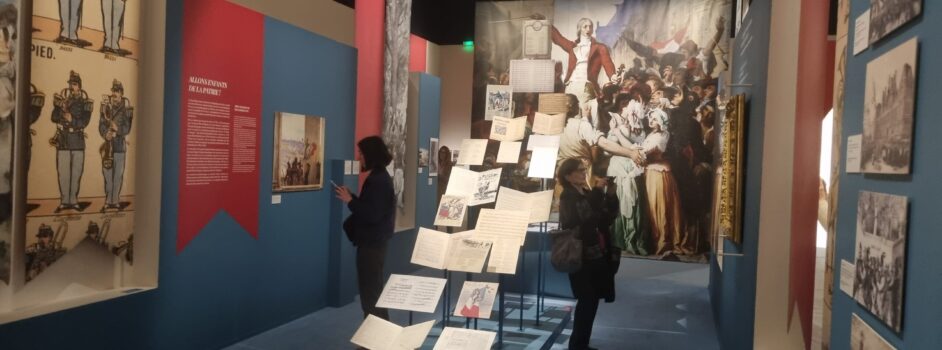Plus de détails
Strasbourg. Opéra national du Rhin. 18-III-2016. Wolfgang Amadeus Mozart (1756-1791) : Idomeneo, opera seria en trois actes sur un livret de Giambattisa Varesco. Mise en scène : Christophe Gayral. Décors : Barbara de Limburg. Costumes : Jean-Jacques Delmotte. Lumières : Philippe Berthomé. Chorégraphie : Karine Girard. Avec : Maximilian Schmitt, Idomeneo ; Juan Francisco Gatell, Idamante ; Judith Van Wanroij, Ilia ; Agneta Eichenholz, Elettra ; Diego Godoy, Arbace ; Emmanuel Franco, le Grand Prêtre de Neptune ; Nathanaël Tavernier, la Voix ; Isabelle Majkut et Styliani Oikono, deux Crétoises ; Sangbae Choi et Laurent Koehler, deux Troyens. Irene Cordelia Huberti, continuo ; Chœur de l’Opéra national du Rhin (chef de chœur : Sandrine Abello) ; Orchestre symphonique de Mulhouse, direction : Sergio Alapont.
 The new Idomeneo at l'opéra national du rhin was entrusted to Christophe Gayral, already known at the house for Il matrimonio segreto and Owen Wingrave.
The new Idomeneo at l'opéra national du rhin was entrusted to Christophe Gayral, already known at the house for Il matrimonio segreto and Owen Wingrave.
In his conception it prefigured Die Zauberflöte, premiered a decade later: Ilia and Idamante were equated with Pamina and Tamino, Elettra with the Queen of the Night, and the final deus ex machina with Sarastro, though this Oracle had been physically present throughout and played an active role in driving the resolution. Scrutinized by initiates—the chorus and a group of dancers—the characters duly underwent trials. Amid Barbara de Limburg's minimalist decor of three mobile panels, and with elegant lighting by Philippe Berthomé and timeless, rather dowdy costumes by Jean-Jacques Delmotte, the action unfolded in a stylized fashion: the storm was depicted by a rippling blue cloth and the sea monster with shadowplay. The only specifically Greek reference was a giant statue of Poseidon, which was dismantled at the end as the new initiates rejected the idols they had worshipped and celebrated rather incongruously with a picnic. The bright colours at the close were at odds with the sobriety of what had gone before, and the impression left by the production overall was of something repetitive, lacklustre and generic.
The opera was performed in a hybrid of the Munich (1781) and Vienna (1786) versions, with a tenor Idamante. Gayral, stating his intention to ‘retain the audience's attention', instituted a number of cuts—not just the ballet, but also Arbace's arias, Idamante's ‘Non temer, amato bene' (written for Vienna) and, most notably, Idomeneo's concluding ‘Torna la pace al core', a choice that brought the opera to a precipitous close.
Judith van Wanroij's radiant, committed Ilia stopped time with ‘Se il padre perdei', but the cast as a whole was uneven and sometimes inadequate. As Elettra, Agneta Eichenholz commanded both the tricky tessitura and the stage, but her singing was monochrome, albeit explosive at the top. The two tenors, father and son, were insufficiently contrasted: Maximilian Schmitt seemed out of his depth as Idomeneo, singing with nasal tone and blurred diction and sliding around in ‘Fuor del mar' (in its full version, what's more); Juan Francisco Gatell was more at ease as Idamante, but his tone lacked variety and he had tuning problems at the top. Diego Godoy was very light of voice as Arbace; Nathanaël Tavernier made a solid and sonorous Oracle.
The chorus rose with precision and intensity to the many vocal and scenic demands that were made on them and the Orchestre Symphonique de Mulhouse produced a well-blended sound with fine renditions of the instrumental solos; the continuo-playing, however, would have benefited from more variety and invention. Hervé Niquet had been announced for this production, but he was replaced by the young Spanish conductor Sergio Alapont, who took a lively, vigorous and thoroughly Classical approach to the score.
Translated by Opera Magazine (UK)
Crédit photographique : © Alain Kaiser
Plus de détails
Strasbourg. Opéra national du Rhin. 18-III-2016. Wolfgang Amadeus Mozart (1756-1791) : Idomeneo, opera seria en trois actes sur un livret de Giambattisa Varesco. Mise en scène : Christophe Gayral. Décors : Barbara de Limburg. Costumes : Jean-Jacques Delmotte. Lumières : Philippe Berthomé. Chorégraphie : Karine Girard. Avec : Maximilian Schmitt, Idomeneo ; Juan Francisco Gatell, Idamante ; Judith Van Wanroij, Ilia ; Agneta Eichenholz, Elettra ; Diego Godoy, Arbace ; Emmanuel Franco, le Grand Prêtre de Neptune ; Nathanaël Tavernier, la Voix ; Isabelle Majkut et Styliani Oikono, deux Crétoises ; Sangbae Choi et Laurent Koehler, deux Troyens. Irene Cordelia Huberti, continuo ; Chœur de l’Opéra national du Rhin (chef de chœur : Sandrine Abello) ; Orchestre symphonique de Mulhouse, direction : Sergio Alapont.







